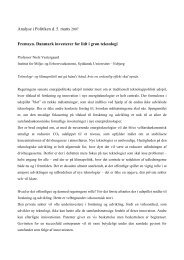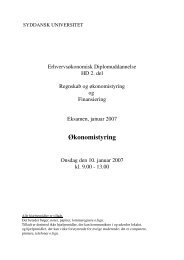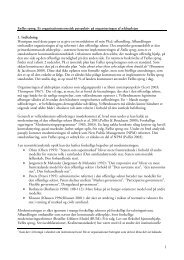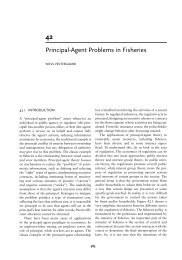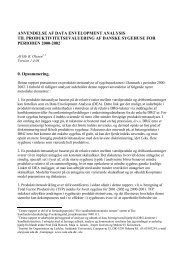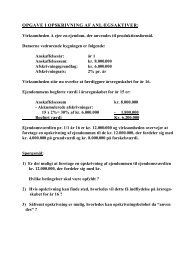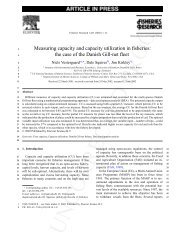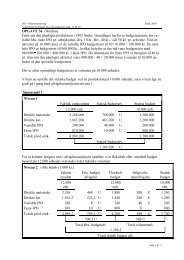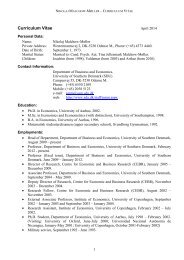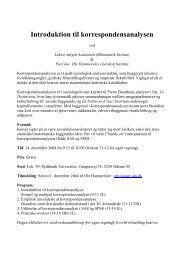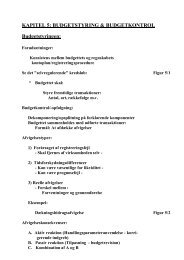In the late 1990’s elections mostly expressed ”politically motivated government blame”, no longerthey were referenda for or aga<strong>in</strong>st the old systems, more express<strong>in</strong>g ”politically motivated systemblame”.In the second stage, mov<strong>in</strong>g to more ”ord<strong>in</strong>ary politics”, the political parties acquired more powerwithout necessarily becom<strong>in</strong>g more legitimate. The elections <strong>in</strong> the late 1990s evidenced that<strong>in</strong>stitutional design, campaign strategies, organizational resources, <strong>and</strong> the mood <strong>of</strong> the electoratesubstantially matter regard<strong>in</strong>g the f<strong>in</strong>al outcome <strong>of</strong> national electionsA relatively unimportant rolewas played by party membership. Instead, the crucial role has been played by party leaders. Thusthe new parties were more likely to resemble Kirchheimer’s catch-all, Panebianco’s electoralpr<strong>of</strong>essional<strong>and</strong> Katz <strong>and</strong> Mair’s cartel party than Duverger’s mass party model (Szczerbiak,2001:101).In the third <strong>and</strong> fourth stage the political parties were forced to pay more attention to the externalframes focus<strong>in</strong>g more on long-term policies <strong>and</strong> strategies. A polical learn<strong>in</strong>g took place <strong>and</strong> moreattention had to be paid to formulation <strong>of</strong> the rigt strategies <strong>and</strong> programmatic work. The freedom<strong>of</strong> maneuvre <strong>in</strong> the economic <strong>and</strong> social policy was still limited, but the politicians seemed to havelearned how to compete over operat<strong>in</strong>g styles, tactically modulated pr<strong>in</strong>ciples, postmodern issuesrather than programmatic substance (Innes, 2002:88). The true constra<strong>in</strong>ts, under which the partieshad to operate, became more apparent. If that happens, separation <strong>of</strong> parties from civil societiesmight be less strik<strong>in</strong>g. However, not all the political parties were able to move that optimal laterstage.The parties <strong>and</strong> party systems were still marked by transition anomie, too weak party<strong>in</strong>stitutionalization <strong>and</strong> lack <strong>of</strong> a system ophold<strong>in</strong>g <strong>and</strong> a stabiliz<strong>in</strong>g middle class (“the miss<strong>in</strong>gmiddle”), but the attention <strong>of</strong> most voters moved more explicitly from the political to the economicsphere. The freedom <strong>of</strong> manoeuvre <strong>in</strong> the economic policy was narrow due to externalconditionalities <strong>and</strong> lack <strong>of</strong> economic ressources. Also misuse <strong>of</strong> political power (“party-ism”) wasstrik<strong>in</strong>g due to short-term political horizons <strong>and</strong> path-dependency. In the third <strong>and</strong> fourth stage thepolitical parties might become better <strong>in</strong>stitutionalised, but <strong>in</strong> most cases <strong>in</strong> the shape <strong>of</strong> theestablishment <strong>of</strong> centralised top-down led pr<strong>of</strong>essional electoral cartel parties <strong>and</strong> fragile electionalliances forced upon the parties due to high thesholds for gett<strong>in</strong>g seats <strong>in</strong> parliament. This suggeststhat the changes over time have been non-l<strong>in</strong>ear, at different times signify<strong>in</strong>g unification <strong>of</strong> forces,fragmentarisation, <strong>in</strong> some cases formation <strong>of</strong> a common identity <strong>and</strong> <strong>in</strong> several cases “wars <strong>in</strong> thetop”.In most cases the party-coalitions, e.g. AWS <strong>in</strong> Pol<strong>and</strong> <strong>and</strong> SDK <strong>in</strong> Slovakia were fragileconstructions, neither sufficiently <strong>in</strong>stitutionalised nor based on a common identity <strong>and</strong> partyculturebecause each party <strong>in</strong>side the alliance cared about its own identity. Thus we were mostlydeal<strong>in</strong>g with negative election alliances, only kept together by the common enemy (i.e.”postcommunists”).In some cases party alliances were purely tactical aim<strong>in</strong>g at m<strong>in</strong>imiz<strong>in</strong>g the waste <strong>of</strong>votes at the elections. The ultimate goal was to establish a new common right w<strong>in</strong>g governmentafter election victory <strong>and</strong> transform the election alliances to new st<strong>and</strong>ard parties or functionalparty-federations. Opposite the Polish Right, after 10 years the left w<strong>in</strong>g party alliance SLD <strong>in</strong>Pol<strong>and</strong> succeeded <strong>in</strong> transform<strong>in</strong>g itself <strong>in</strong>to a discipl<strong>in</strong>ed st<strong>and</strong>ard party hav<strong>in</strong>g until thenconstituted an alliance <strong>of</strong> 20-30 different groups on the left side <strong>of</strong> the political spectrum. As weshall see <strong>in</strong> the follow<strong>in</strong>g, the right w<strong>in</strong>g election alliance AWS <strong>in</strong> Pol<strong>and</strong> was not able to solve the16
most important <strong>in</strong>stitutional <strong>and</strong> policy <strong>and</strong> programme problems <strong>and</strong> had to pay a heavy price forthat at the 2001 election.In the later stages the social l<strong>in</strong>ks between the state <strong>and</strong> the parties were re<strong>in</strong>forced. Thus mostparties <strong>and</strong> party federations tended to become post-communist catch all <strong>and</strong> cartel parties. As carteltype parties they were primarily focus<strong>in</strong>g on state power, aim<strong>in</strong>g to appeal to so broad sections <strong>of</strong>society as possible. At the same time bad governance, misuse <strong>of</strong> power, clietelism, politicalcapitalism <strong>and</strong> corruption tended to weaken the position <strong>of</strong> political parties <strong>in</strong> general, not leastparties <strong>in</strong> government position.Gradually the Central European party systems moved closer to the classical European party systemmodels consist<strong>in</strong>g <strong>of</strong> a centre-left versus centre-right bipolar system, <strong>in</strong> some cases a tripolar multipartysystem ma<strong>in</strong>ly based on socio-economic cleavages (Ágh, 1998:111). The neoliberal discourselost its orig<strong>in</strong>al appeal. Elections became more retrospective <strong>and</strong> only few government passed thetest. The embryonic characteristics became less strik<strong>in</strong>g, but the <strong>in</strong>take <strong>of</strong> new party membersrema<strong>in</strong>ed low. Furthermore, from the mid 1990s the election campaigns tended to be conducted <strong>in</strong>more pr<strong>of</strong>essionally <strong>in</strong> spite <strong>of</strong> the fact that the l<strong>in</strong>ks between political parties <strong>and</strong> civil societiesrema<strong>in</strong>ed rather weak. Nevertheless, the parties became more “outward-look<strong>in</strong>g”. Interest groupsga<strong>in</strong>ed more <strong>in</strong>fluence, <strong>in</strong> some cases delay<strong>in</strong>g political <strong>and</strong> economic reforms, e.g. privatization<strong>and</strong> restructur<strong>in</strong>g <strong>of</strong> public f<strong>in</strong>ances. Some political groups tried to adhere to the old movement l<strong>in</strong>e,but <strong>in</strong> the longer run the majority <strong>of</strong> the electorate seemed to prefer parties characterized by strongleadership, pr<strong>of</strong>essionalism, clear, long-term <strong>and</strong> consistent political programmes <strong>and</strong> goodperformance <strong>in</strong> the media. Thus party <strong>in</strong>stitutionalisation seemed to matter also <strong>in</strong> the case <strong>of</strong> theCEEC’s.The economic recession brought the parties <strong>of</strong> power under heavy pressure. However, neithermacroeconomic progress was any guarantee <strong>of</strong> success. Socialist led governments <strong>in</strong> Pol<strong>and</strong> <strong>and</strong>Hungary lost elections <strong>in</strong> spite <strong>of</strong> good macroeconomic performance. The establishment <strong>of</strong> partyalliancewas most obvious for “outsider parties” without prospects for parliamentary representationby “go<strong>in</strong>g alone”. Later the access to the political scene became more difficult as the cost <strong>of</strong>entrance for new parties became higher due to the f<strong>in</strong>ancial constra<strong>in</strong>ts <strong>and</strong> the modest access to themedia. A defreez<strong>in</strong>g <strong>of</strong> the old “we-them” polarization took place, but to a different extent og withdifferent speed. From the outset the political culture seemmed to be the most consensual <strong>in</strong> case <strong>of</strong>Hungary.In conclusion, we can say that party <strong>and</strong> party system development can partly be expla<strong>in</strong>ed by thelegacy <strong>of</strong> the past <strong>and</strong> social <strong>and</strong> economic i.e. structural factors, <strong>and</strong> partly by the dynamics <strong>of</strong> thetransitions themselves, e.g. the political style <strong>of</strong> the political leaders, the way <strong>of</strong> governance, thepolitical craft<strong>in</strong>g, the <strong>in</strong>stitutional set-up <strong>and</strong> the changes on policy <strong>and</strong> programme level. Thesignificance <strong>of</strong> each variable has varied from country to country <strong>and</strong> over time. Political craft<strong>in</strong>g<strong>and</strong> entrepreneurship made a strong impact <strong>in</strong> the first stage <strong>of</strong> extraord<strong>in</strong>ary politics due to thepower vacuum <strong>and</strong> the great political capital.Short term factors, not great visions <strong>and</strong> political utopia’s tended to determ<strong>in</strong>e the outcomes <strong>of</strong> thefelections. The parties were chang<strong>in</strong>g, marked several “fissions” <strong>and</strong> “fusions”, but the voterpreferences seemed to be rather stabile <strong>and</strong> long-term. The quality <strong>of</strong> governance seemed to becomedecisive determ<strong>in</strong><strong>in</strong>g the outcome <strong>of</strong> the elections. The judgments from the voters over the partiesrema<strong>in</strong>ed merciless, even after mov<strong>in</strong>g away from “the valleys <strong>of</strong> tear”. The elections wwere17
- Page 3: “This provisional situation chara
- Page 6 and 7: marketisation and privatisationshor
- Page 8 and 9: purposes, are channels for “expre
- Page 10 and 11: the significance of strategic choic
- Page 12 and 13: presidentialism gave rise to “flo
- Page 14 and 15: antipolitics and reinforcement of a
- Page 18 and 19: determined primarily by “politica
- Page 20 and 21: politics and antipolitics, all sign
- Page 22 and 23: which attitudes to state regulation
- Page 24 and 25: Anti-communism has been defined in
- Page 26 and 27: elections and the Slovak communists
- Page 28 and 29: Cartel agreementsbetter representat
- Page 30 and 31: Basically the absence of clear cons
- Page 32 and 33: After 1989 different types of polit
- Page 34 and 35: complex project for transition unde
- Page 36 and 37: window of opportunity in spite of s
- Page 38 and 39: analyses of party institutionalizat
- Page 40 and 41: political messages and slogans. Thu
- Page 42 and 43: well established party culture may
- Page 44 and 45: expected, much due to the many spli
- Page 46 and 47: Furthermore, the polarisation on el
- Page 48 and 49: Finally, Solidarity can also be con
- Page 50 and 51: whole, on the one side an authorita
- Page 52 and 53: The economic recession and the grav
- Page 54 and 55: election defeat more cooperation an
- Page 56 and 57: The formation of AWS can be conside
- Page 58 and 59: group. RS AWS constituted the Chris
- Page 60 and 61: According to the original plans the
- Page 62 and 63: values. According to Rybicki, as so
- Page 64 and 65: AWS should fight against all types
- Page 66 and 67:
2001 parliamentary election, howeve
- Page 68 and 69:
and workers voted ZChN. At the 1993
- Page 70 and 71:
The League has been considered as a
- Page 72 and 73:
establishment like than LPR’s. Th
- Page 74 and 75:
jobs in rural areas, especially sma
- Page 76 and 77:
industrial policy. According to the
- Page 78 and 79:
pressurizing the government to give
- Page 80 and 81:
democrats, thereby locating itself
- Page 82 and 83:
To conclude, the Freedom Union (UW)
- Page 84 and 85:
Polish middle class. Thus, in Janua
- Page 86 and 87:
such as KSCM and KSS in The Czech R
- Page 88 and 89:
The SLD leaders were mainly recruit
- Page 90 and 91:
the falling popular support for pri
- Page 92 and 93:
innovation was formation of the pol
- Page 94 and 95:
place after talks with each applica
- Page 96 and 97:
Has the Left any freedom of manoeuv
- Page 98 and 99:
medicine, changes in the labour cod
- Page 100 and 101:
The Labour Union (UP), Democratic U
- Page 102:
Nevertheless, before that had taken



